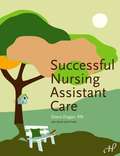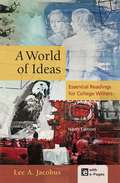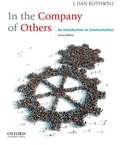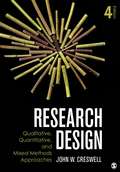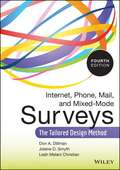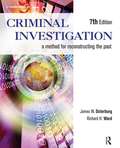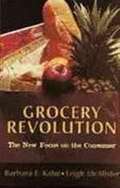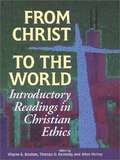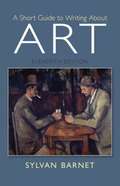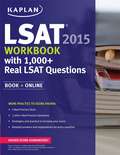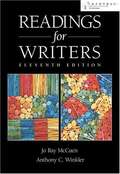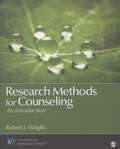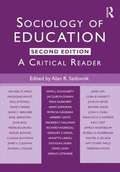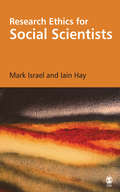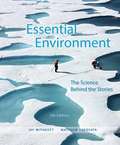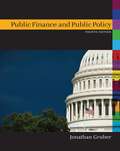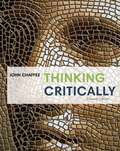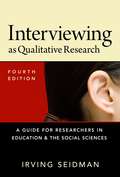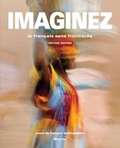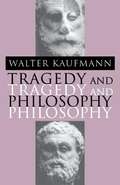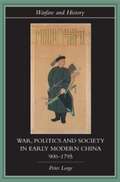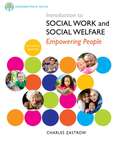- Table View
- List View
Successful Nursing Assistant Care (Second Edition)
by Diana L. DuganA student-friendly text, the second edition of Successful Nursing Assistant Care by Diana Dugan, RN is a comprehensive textbook to train nursing assistants that teaches all state, federal, and safety requirements. It is beautifully illustrated and clearly photographed with color tabs for easy location of material. This book emphasizes safety, privacy, and respect before and after providing care. Care guidelines are colored for easy reference, and ways to promote residents right's are emphasized. This book contains updated information on HIPAA and CDC guidelines for infection control. Organized around learning objectives, it contains creative methods to teach care and related observations, ways to promote independence, essential information on preventing abuse and neglect, and chapter-ending material which develops critical thinking, as well as tests the chapter. This textbook reflects author Diana Dugan's 15 years of experience teaching nursing assistants in community colleges, proprietary schools, and long-term care facilities.
World of Ideas: Essential Readings for College Writers (9th Edition)
by Lee A. JacobusThe first and bestselling reader of its kind, A World of Ideas introduces students to great thinkers whose ideas have shaped civilizations throughout history. When students hear names like Aristotle, Martin Luther King, Jr., or Sigmund Freud, they recognize the author as important — and they rise to the challenge of engaging with the text and evaluating it critically. No other composition reader offers a comparable collection of essential readings along with the supportive apparatus students need to understand, analyze, and respond to them.
Literature: An Introduction to Reading and Writing AP 4th Edition
by Edgar V. Roberts Darlene Stock StotlerDedicated to the interlocking processes of reading and writing, this book contains carefully chosen literary selections, and each chapter contains detailed information on and sample essays for writing about literature.
In The Company of Others: An Introduction to Communication 4th Ed
by J. Dan RothwellNow in its fourth edition, In the Company of Others continues to use the "communication competence" model to bring introductory human communication courses to life for students. Combining current research with humor, vivid examples, and practical advice, Rothwell tackles interpersonal and small group communication alongside public speaking in a single term.
Research Design: Qualitative, Quantitative, and Mixed Methods Approaches (Fourth Edition)
by John W. CreswellThe eagerly anticipated Fourth Edition of the title that pioneered the comparison of qualitative, quantitative, and mixed methods research design is here! For all three approaches, Creswell includes a preliminary consideration of philosophical assumptions, a review of the literature, an assessment of the use of theory in research approaches, and refl ections about the importance of writing and ethics in scholarly inquiry. He also presents the key elements of the research process, giving specifi c attention to each approach. The Fourth Edition includes extensively revised mixed methods coverage, increased coverage of ethical issues in research, and an expanded emphasis on worldview perspectives.
Internet, Phone, Mail, and Mixed-Mode Surveys: The Tailored Design Method (Fourth Edition)
by Don A. Dillman Leah Melani Christian Jolene D. SmythThe classic survey design reference, updated for the digital age For over two decades, Dillman's classic text on survey design has aided both students and professionals in effectively planning and conducting mail, telephone, and, more recently, Internet surveys. The new edition is thoroughly updated and revised, and covers all aspects of survey research. It features expanded coverage of mobile phones, tablets, and the use of do-it-yourself surveys, and Dillman's unique Tailored Design Method is also thoroughly explained. This invaluable resource is crucial for any researcher seeking to increase response rates and obtain high-quality feedback from survey questions. Consistent with current emphasis on the visual and aural, the new edition is complemented by copious examples within the text and accompanying website. This heavily revised Fourth Edition includes: Strategies and tactics for determining the needs of a given survey, how to design it, and how to effectively administer it How and when to use mail, telephone, and Internet surveys to maximum advantage Proven techniques to increase response rates Guidance on how to obtain high-quality feedback from mail,electronic, and other self-administered surveys Direction on how to construct effective questionnaires,including considerations of layout The effects of sponsorship on the response rates of surveys Use of capabilities provided by newly mass-used media:interactivity, presentation of aural and visual stimuli. The Fourth Edition reintroduces the telephone-including coordinating land and mobile. Grounded in the best research, the book offers practical how-to guidelines and detailed examples for practitioners and students alike.
Criminal Investigation: A Method For Reconstructing the Past (Seventh Edition)
by James W. Osterburg Richard H. WardThis text presents the fundamentals of criminal investigation and provides a sound method for reconstructing a past event (i. e. , a crime), based on three major sources of information -- people, records, and physical evidence. Its tried-and-true system for conducting an investigation is updated with the latest techniques available, teaching the reader new ways of obtaining information from people, including mining the social media outlets now used by a broad spectrum of the public; how to navigate the labyrinth of records and files currently available online; and fresh ways of gathering, identifying, and analyzing physical evidence.
The Grocery Revolution: The New Focus on the Consumer
by Barbara E. Kahn Leigh M. McalisterThis text provides an introduction to the understanding of changing consumer behaviour and trends in managerial practice in the grocery industry.
From Christ to the World: Introductory Readings in Christian Ethics
by Wayne G. Boulton Thomas D. Kennedy Allen VerheyThis is a single volume that effectively introduces students to the full breadth of the discipline of Christian ethics. This reader captures the range of timely issues related to ethics but not at the expense of essays that show the theoretical foundations of the field. Part One examines the sources of Christian EthicsScripture, tradition, philosophy, and science. The norms, forms, and contexts of Christian moral theories are reviewed in Part Two. The final section discusses contemporary questions about human sexuality, medical practice, the use of force, economic justice, ecological responsibility, and more. Relevant biblical readings and a series of case studies accentuate the text. "
A Short Guide To Writing About Art (Eleventh Edition)
by Sylvan BarnetThe best-selling guide to writing about art, Sylvan Barnet's A Short Guide to Writing About Art guides students through every aspect of writing about art. Students are shown how to analyze pictures (drawings, paintings, photographs), sculptures and architecture, and are prepared with the tools they need to present their ideas through effective writing. Coverage of essential writing assignments includes formal analysis, comparison, research paper, review of an exhibition, and essay examination. New to the 11th edition is a chapter on "Virtual Exhibitions: Writing Text Panels and Other Materials. " MySearchLab is a part of the Barnet program. Research and writing tools, including access to academic journals, helps students master basic writing skills.
Kaplan LSAT Workbook 2015
by KaplanKaplan's LSAT Workbook 2015 is the perfect companion to our best-selling LSAT Premier book or for students looking for more practice. Kaplan's LSAT Workbook 2015 with 1,000+ Real LSAT Questions features: OVER 1,000 NEWLY RELEASED QUESTIONS: Recently-released LSAT practice questions for the best in realistic practice. DETAILED EXPLANATIONS: Easy-to-read, comprehensive explanations for every question and every answer choice. FOUR MOST RECENT FULL-LENGTH EXAMS: Four of the most recent full-length exams allow for more realistic practice. Use in conjunction with Kaplan's free "LSAT Proctor Anywhere" app available for iOS devices. PRODUCED BY KAPLAN'S PRODUCT DEVELOPMENT TEAM: The team behind Kaplan's world-leading LSAT prep courses has designed, developed and authored Kaplan's LSAT Workbook and Kaplan's LSAT Premier - the #1 best-selling comprehensive LSAT prep book on the market.
Readings For Writers
by Anthony C. Winkler Jo Ray MccuenThis best-selling rhetorical reader includes both essays and fiction and now offers a new chapter on combining the patterns of development, coverage of visual rhetoric, and more on the reading and writing process.
Research Methods For Counseling: An Introduction
by Robert J. WrightResearch Methods for Counseling: An Introduction provides a rich, culturally sensitive presentation of current research techniques in counseling. Author Robert J. Wright introduces the theory and research involved in research design, measurement, and assessment with an appealingly clear writing style. He addresses ways to meet the requirements of providing the data needed to facilitate evidence-based therapy and interventions with clients, and also explains methods for the evaluation of counseling programs and practices. This comprehensive resource covers a broad range of research methods topics including qualitative research, action research, quantitative research including, sampling and probability, and probability-based hypothesis testing. Coverage of both action research and mixed methods research designs are also included.
Sociology Of Education: A Critical Reader 2nd Ed
by Alan R. Sadovnik Ryan CoughlanThis comprehensive and bestselling Reader examines the most pressing topics in sociology and education while exposing students to examples of sociological research on schools. Drawing from classic and contemporary scholarship, noted sociologist Alan R. Sadovnik has chosen readings that examine current issues and reflect diverse theoretical approaches to studying the effects of schooling and society. The second edition provides students with seven new readings from some of the best theorists and researchers in education including James S. Coleman, Madeleine Arnot, and Claudia Buchman. Through full, rather than excerpted primary source readings, students have the opportunity to read sociological research as it is written and engage in critical analyses of readings in their entirety. Including comprehensive section introductions, questions for reflection and discussion, and suggested readings, Sociology of Education will stimulate student thinking about the important roles that schools play in contemporary society and their ability to solve fundamental social, economic and political problems.
Research Ethics for Social Scientists
by Iain Hay Mark Israel`This is an excellent book which can be recommended both to the professional ethicist seeking to situate research ethics for a social scientific audience and to social scientists seeking an overview of the current ethical landscape of their discipline' - Research Ethics Review Ethics is becoming an increasingly prominent issue for all researchers across the western world. This comprehensive and accessible guide introduces students to the field and encourages knowledge of research ethics in practice. Research Ethics for Social Scientists sets out to do four things: The first is to demonstrate the practical value of thinking seriously and systematically about what constitutes ethical conduct in social science research. Secondly, the text identifies how and why current regulatory regimes have emerged. Thirdly, it seeks to reveal those practices that have contributed to the adversarial relationships between researchers and regulators. Finally, the book hopes to encourage both parties to develop shared solutions to ethical and regulatory problems. Research Ethics for Social Scientists is an excellent introductory text for students as it: - introduces students to ethical theory and philosophy; - provides practical guidance on what ethical theory means for research practice; - provides case studies to give real examples of ethics in research action. The result is an informative, accessible and practical guide to research ethics for any student or researcher in the social sciences.
Essential Environment: The Science Behind The Stories 5th Ed
by Jay Withgott Matthew LaposataEssential Environment: The Science behind the Stories, Fifth Edition engages students using current, integrated case studies that provide a context for understanding science and environmental concerns in a brief, 18-chapter text. Jay Withgott and Matt Laposata present the latest understanding of environmental science along with expanded FAQ discussions that address common student misconceptions and with new Data Analysis questions that build quantitative literacy.
Public Finance And Public Policy 4th Ed
by Jonathan GruberJonathan Gruber's groundbreaking Public Finance and Public Policy was the first textbook to truly reflect the way public policy is created, implement, and researched. Like no other text available, it integrated real-world empirical work and coverage of transfer programs and social insurance into the traditional topics of public finance. From its first edition, the book quickly became the market-leading text for Public Finance and Public Policy courses, and the margin is growing. Thoroughly updated, this timely new edition gives students the basic tools they need to understand the driving issues of public policy today, including healthcare, education, global climate change, entitlements, and more.
Thinking Critically
by John ChaffeeTHINKING CRITICALLY helps students become sophisticated thinkers by teaching the fundamental cognitive process that allows them to develop the higher-order thinking abilities needed for academic study and career success. The text compels students to use their intellect to think critically about subjects drawn from academic disciplines, contemporary issues, and their life experiences. The text begins with basic skills related to personal experience and then carefully progresses to the more sophisticated reasoning skills required for abstract, academic contexts. Each chapter provides an overview of an aspect of critical thinking, such as problem-solving, perception, and the nature of beliefs. Thinking Activities, thematic boxes, and writing assignments encourage active participation and prompt students to critically examine others' thinking, as well as their own. Thought-provoking and current readings from a wide variety of thinkers get students to think about complex issues from different perspectives. Each chapter ends with self-assessment activities that help students monitor their own progress as critical thinkers.
Interviewing as Qualitative Research: A Guide for Researchers in Education and the Social Sciences 4th Ed
by Irving SeidmanNow in its fourth edition, this popular book provides clear, step-by-step guidance for new and experienced interviewers to develop, shape, and reflect on interviewing as a qualitative research process. Using concrete examples of interviewing techniques to illustrate the issues under discussion, this classic text helps readers to understand the complexities of interviewing and its connections to broader issues of qualitative research. The text includes principles and methods that can be adapted to a range of interviewing approaches.
McCurnin's Clinical Textbook for Veterinary Technicians (Eighth Edition)
by Joanna M. Bassert John ThomasA fundamental text in the field of veterinary technology, McCurnin's Clinical Textbook for Veterinary Technicians, 8th Edition has the trusted content, simplified layout, and novel study tools every Vet Tech needs. Sections on small and large animals, birds, reptiles, and small mammals embrace every aspect of the veterinary field, while case presentations of actual patient situations link information to relevant, real-life scenarios. Vet Tech Threads offer helpful pedagogical aids such as introductions, suggested readings, boxed Technician Notes, learning objectives, chapter outlines and key terms. Large animal care integrated throughout the book with medical records, dentistry, physical examination, surgical instrumentation, and more. Step-by-step instructions and photographs makes information readily accessible in emergency and clinical situations. Birds, reptiles, and small mammals chapter keeps you up-to-date with care and treatment for these increasingly popular pets. Chapters on pharmacology, pain management, restraint, and veterinary oncology offer a broader understanding of the responsibilities of a technician. NEW! Chapter on fluid therapy and transfusion medicine, a critical aspect of veterinary technology. NEW! Introduction to the concept of the Technician Practice Model ensures that excellent nursing care is provided to each and every patient. NEW! Added content on electrocardiography included in the Emergency Nursing chapter.
Imaginez: le français sans frontières, cours de français intermédiaire
by Cherie MitschkeNIMAC-sourced textbook
Tragedy And Philosophy
by Walter KaufmannA critical re-examination of the views of Plato, Aristotle, Hegel and Nietzsche on tragedy. Ancient Greek tragedy is revealed as surprisingly modern and experimental, while such concepts as mimesis, catharsis, hubris and the tragic collision are discussed from different perspectives.
War, Politics And Society In Early Modern China 900-1795
by Peter LorgeThis comprehensive survey of Chinese military history is the only book in English to span the significant years from 900 - 1795. Peter Lorge questions current theories on China's relationship to war, and argues that war was the most important tool used by the Chinese in building and maintaining their empire. Emphasizing the relationship between the military and politics, chapters are organised around specific military events and, Lorge argues, the strength of territorial claims and political impact of each dynasty were determined by their military capacity. Ideal as a course adoption text for Asian military studies, this is also valuable for students of Chinese studies, military studies and Chinese history.
What Is Philosophy?
by Gilles Deleuze Félix Guattari Hugh Tomlinson Graham BurchellCalled by many France's foremost philosopher, Gilles Deleuze is one of the leading thinkers in the Western World. His acclaimed works and celebrated collaborations with Félix Guattari have established him as a seminal figure in the fields of literary criticism and philosophy. The long-awaited publication of What Is Philosophy? in English marks the culmination of Deleuze's career. Deleuze and Guattari differentiate between philosophy, science, and the arts, seeing as means of confronting chaos, and challenge the common view that philosophy is an extension of logic. The authors also discuss the similarities and distinctions between creative and philosophical writing. Fresh anecdotes from the history of philosophy illuminate the book, along with engaging discussions of composers, painters, writers, and architects. A milestone in Deleuze's collaboration with Guattari, What Is Philosophy? brings a new perspective to Deleuze's studies of cinema, painting, and music, while setting a brilliant capstone upon his work.
Introduction To Social Work And Social Welfare
by Charles ZastrowThe bestselling introductory Social Work book on the market, Zastrow's INTRODUCTION TO SOCIAL WORK AND SOCIAL WELFARE: EMPOWERING PEOPLE, 11th Edition, is also lauded for being the most comprehensive. In addition to giving readers a thorough overview of the social work profession, this text offers a realistic view of social problems in contemporary society, equipping students with real-world insight that they can apply in practice. By presenting positive strategies in the context of the core values, ethics, skills, and knowledge base of today's professional social worker, Zastrow encourages readers to think critically about new, workable methods for problem-solving and empowering clients. Contemporary social problems case studies, exhibits, and tables help users apply concepts and compare and contrast issues. The Eleventh Edition has been thoroughly updated to include the latest NASW Standards, as well as new and emerging issues from the field. Packed with cutting-edge coverage and comprehensive CSWE core content, INTRODUCTION TO SOCIAL WORK AND SOCIAL WELFARE: EMPOWERING PEOPLE, 11th Edition, continues to inspire readers while giving them insight into real-world practice.
